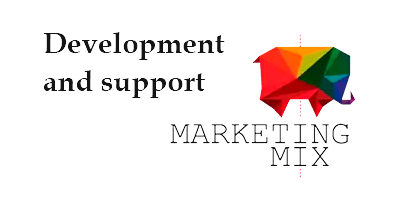-
The service is available all over Ukraine (Kyiv, Kharkiv, Dnipro, Odessa, Lvov, Kamianske, Chernigov, Vinnitsa, Zhitomir, Khmelnitsky). Offer different methods of payment
The European Court of Human Rights was established in 1959 to fulfill the requirements of the Convention for the Protection of Human Rights and Fundamental Freedoms. In 1995, the Law of Ukraine "On Ratification of the Convention for the Protection of Human Rights and Fundamental Freedoms of 1950, the First Protocol and Protocols Nos. 2, 4, 7 and 11 to the Convention" ratified the Convention and some of the Protocols. Subsequently, Ukraine acceded to all the Protocols. Russia and Azerbaijan did not accede to Protocol No. 13, which completely prohibits the death penalty even in wartime. Unlike Poland, which ratified Protocol No. 13 only in May 2014, and it will enter into force only on September 1, 2014, Ukraine ratified this Protocol back in 2003.
Why is it worth applying to the European Court of Human Rights?
Ukrainian judicial practice is based on positivism, i.e. on the literal interpretation of the law, not its spirit. The European Court of Human Rights is more concerned with legal and fair, rather than formal, resolution of a case. For example, the owner's home is subject to constant negative environmental impact from atmospheric or other pollution. It is easy to predict that, provided that the actions of the pests comply with environmental standards, Ukrainian courts will dismiss the claim for protection of property rights or will be guided by the standards.
However, the ECHR is guided in property protection cases not only by the formal criterion, but also by the impact on the value of property (see Hutton v. the United Kingdom, para. 127), Hrymkivska v. Ukraine and others.
The case of Ivanov v. Ukraine, which became a pilot case in cases of recovery of funds from a state body or enterprise, was widely publicized, since the Law of Ukraine "On Enforcement Proceedings" did not allow the creditor to recover funds from the state or state enterprise if they were not provided for in the budget.
The current legislation does not provide for effective remedies (within the meaning of Article 13 of the Convention) in case of non-enforcement of a court decision, but filing a complaint with the ECHR is likely to restore your rights.
How to apply to the European Court of Human Rights?
The main criterion for applying to the ECHR is to comply with the six-month period from the date of violation of your rights, but in case of ongoing violations, this period will correspond to the end of the ongoing violation
The ECHR application procedure consists of the following parts:
- Before communication with the violating state:
At this stage, the complaint is initially examined by a judge of the European Court of Human Rights, who makes a ruling on the admissibility of the complaint.
- Communication of the complaint to the violating state.
If your complaint is found admissible, the ECHR communicates your complaint to the offending state and sets a deadline for submitting an explanation. At this stage, a "friendly settlement" is possible.
Application consideration period
The average period of consideration is 2-5 years, and in case of violations established by "pilot" decisions it may be shorter. The European Court responds promptly to violations that may affect the life or health of the applicant in accordance with Rule 39 of the Rules of Court, where the response period may even be days.
There is no court fee for filing an application to the ECHR.
Procedure for execution of the judgment of the European Court of Human Rights
Pursuant to Article 46 of the Convention, the Committee of Ministers of the Council of Europe is responsible for supervising the state's execution of a judgment of the European Court of Human Rights.
Article 382 of the Criminal Code of Ukraine provides for 3 to 8 years of imprisonment for intentional failure to comply with a judgment by an official. We will help you to file a complaint about the violation of your rights to the European Court of Human Rights and during the case consideration on acceptable terms.
For reference.
The European Court is not a type of higher court in the sense of Ukrainian law, but it can restore the applicant's violated rights, in particular, by directly instructing the state to execute the decision. For example, in the case of Volkov v. Ukraine, the European Court explicitly stated the way to restore the applicant's violated right by reinstating the judge of the Supreme Court of Ukraine, but Ukraine has not complied with this judgment for more than a year; there is a more positive experience of such ECtHR judgments. For example, in the case of Asanidze v. Georgia, the European Court of Human Rights ordered Georgia to immediately release Tengiz Asanidze, the former mayor of Batumi, or the case of Aleksanyan v. Russia, where the European Court also took specific measures to release Vasily Aleksanyan. The principle of restitutio in integrum was used for the first time by the European Court of Human Rights in 1995 in the case of PAPAMICHALOPOULOS AND OTHERS v. GREECE, which concerned the expropriation of a land plot. The judgment of the European Court of Human Rights is the basis for review of a national court decision by the Supreme Court of Ukraine in exceptional circumstances. As a rule, the SCU issues a ruling to review the decision of the Ukrainian court in favor of the applicant.
Дата оновлення 25.11.2025If you find an error or inaccuracy in the text, select it and press Ctrl + Enter
- +38 (044) 466-66-50
- en
-
Protection of human rights in the European Court of Human Rights

Order service


Comments